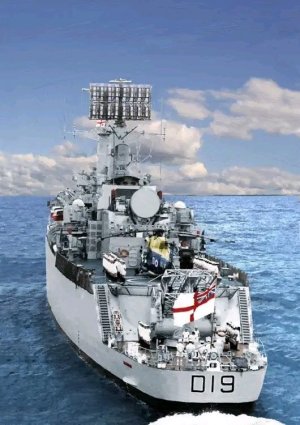- Joined
- Apr 2, 2017
- Messages
- 38,378
- Points
- 463
Germany:
During the severe Winter of 1940, battleship Gneisenau steams slowly in the ice with an escorting destroyer.

Type VIIA U-boat U-34 emblem during winter of 1940-41. Beneath it is the training boat emblem.

She was sunk at 21:55 on 5 August 1943 at Memel (today's Klaipėda in Lithuania), in the Baltic, after a collision with the U-boat tender Lech. Four men died, although 39 survived. The boat was raised on 24 August but stricken on 8 September 1943.
Conning tower of Type VIIC U-boat U-756. Commisioned in Dec 1941. U-756 did not survive to complete her first patrol and did not sink or damage any ships. Eighteen days into her first patrol, on 1 September 1942 U-756 was in the mid North-Atlantic when she was attacked by the corvette HMCS Morden. Heavily damaged, the vessel went down with all 43 aboard.

Neger human torpedo inspected by an Allied serviceman on the Anzio beachhead in April 1944

The first mission took place on the night of 20/21 April 1944. Thirty Negers were launched against Allied ships berthed in Anzio. Only 17 of them managed to deploy, with the other 13 capsizing upon reaching the water. Three failed to return and up until then, the Allies had no knowledge of this new unusual weapon. None had made any successful attacks.
During the severe Winter of 1940, battleship Gneisenau steams slowly in the ice with an escorting destroyer.
Type VIIA U-boat U-34 emblem during winter of 1940-41. Beneath it is the training boat emblem.
She was sunk at 21:55 on 5 August 1943 at Memel (today's Klaipėda in Lithuania), in the Baltic, after a collision with the U-boat tender Lech. Four men died, although 39 survived. The boat was raised on 24 August but stricken on 8 September 1943.
Conning tower of Type VIIC U-boat U-756. Commisioned in Dec 1941. U-756 did not survive to complete her first patrol and did not sink or damage any ships. Eighteen days into her first patrol, on 1 September 1942 U-756 was in the mid North-Atlantic when she was attacked by the corvette HMCS Morden. Heavily damaged, the vessel went down with all 43 aboard.
Neger human torpedo inspected by an Allied serviceman on the Anzio beachhead in April 1944
The first mission took place on the night of 20/21 April 1944. Thirty Negers were launched against Allied ships berthed in Anzio. Only 17 of them managed to deploy, with the other 13 capsizing upon reaching the water. Three failed to return and up until then, the Allies had no knowledge of this new unusual weapon. None had made any successful attacks.
Last edited:








